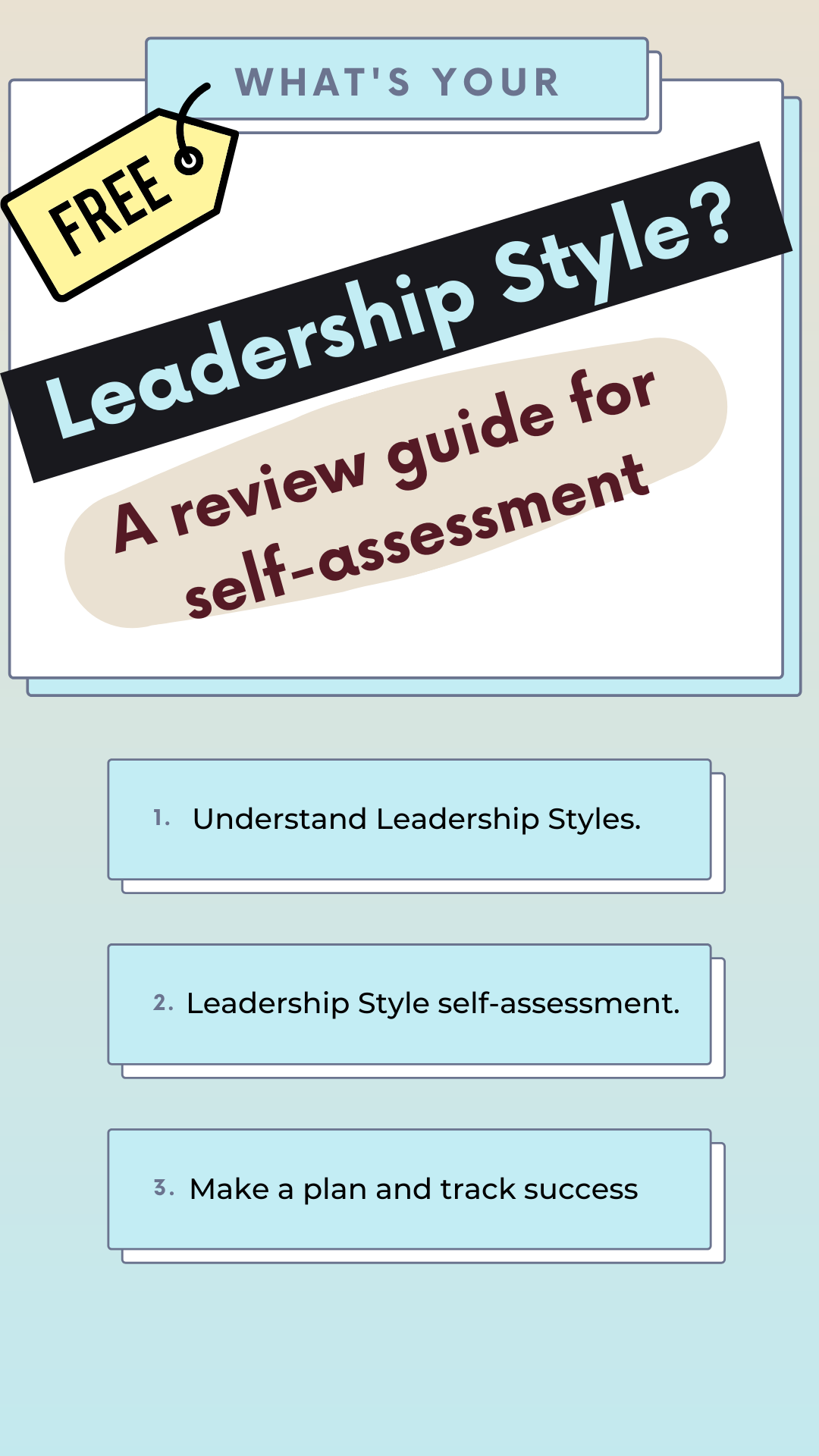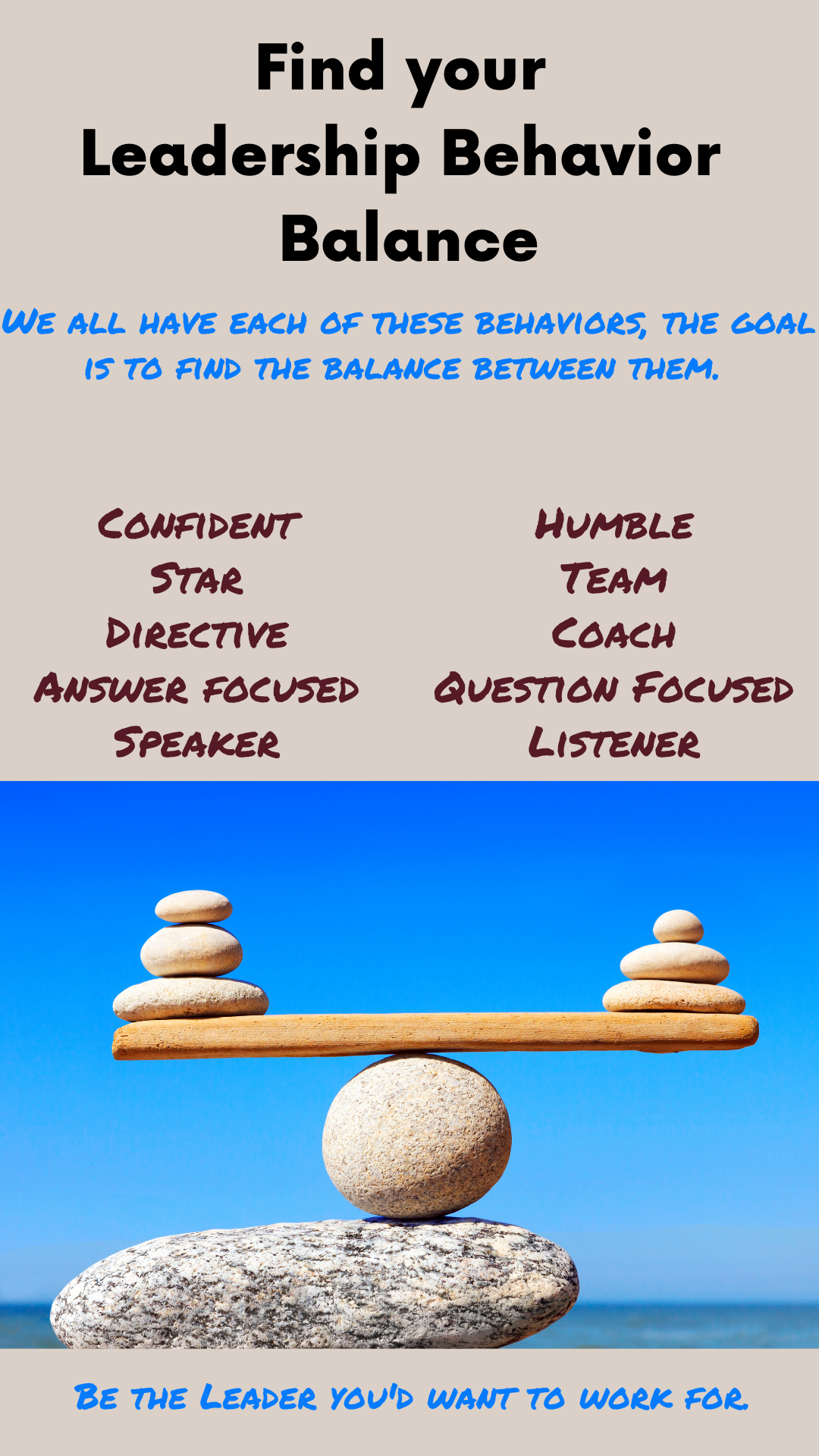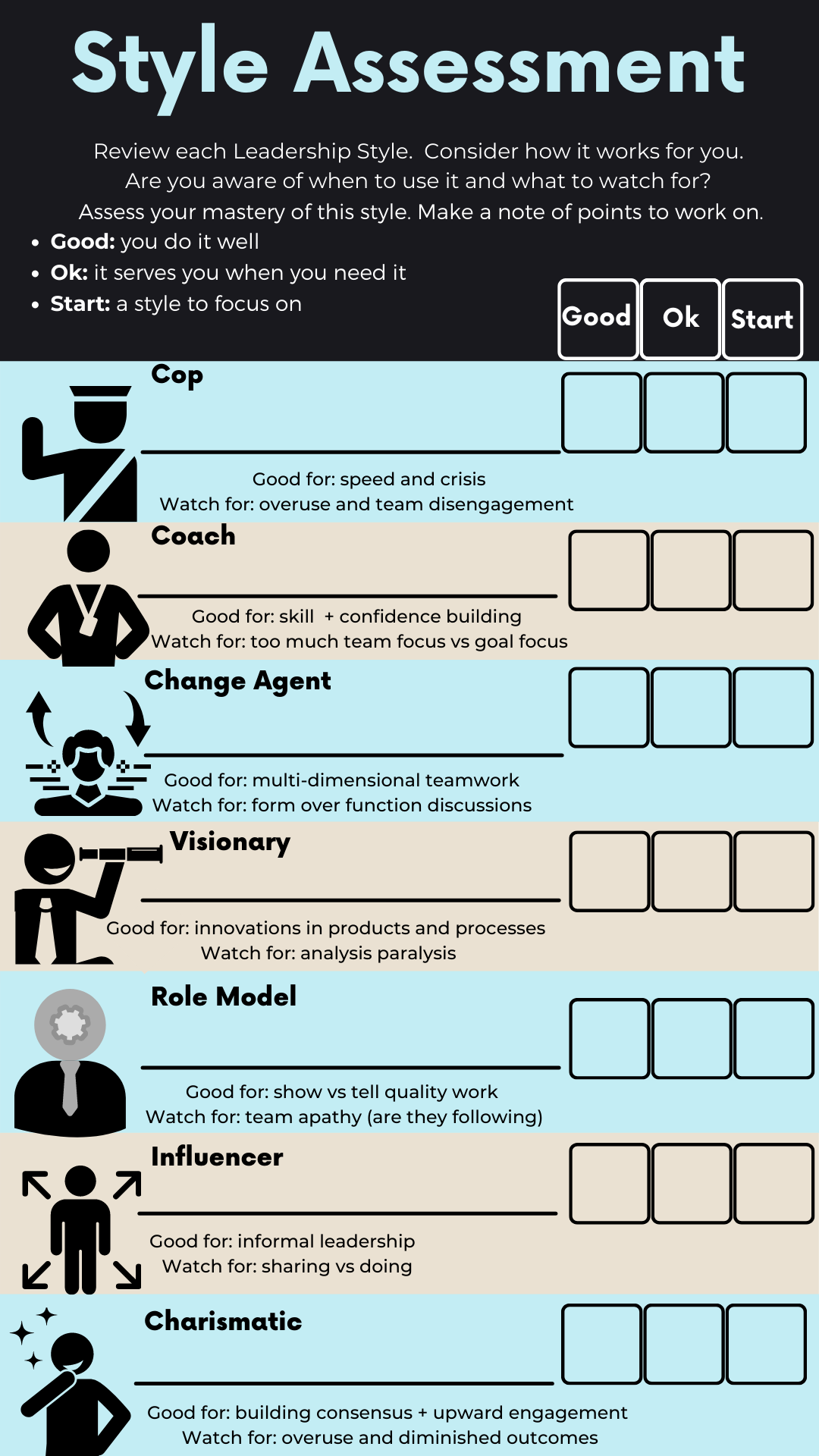Leadership Styles & Behaviors to make you a Better Leader
Successful
Leaders are self aware:
What kind of Leader are you?
Do you want to be a better Leader?
How can awareness improve your Leadership style?
Become a more successful leader by increasing your awareness. Your style and behavior are the ways that you interact and impact others. So do it right. Style flexibility will allow you to match your approach to the situation which can improve your performance.
The goal for every Leader is to:
Understand their preferred Style
Assess themselves based on how it impacts their team and
Work to improve
Why?
Because being a leader can be hard. Being asked to lead may make some fear:
that the team may not respect you
trying to lead but not being 'followed' by the team
that you may fail your team through your bad decisions
The challenge is real.. Fears can impact our ability to become the Leader we need or want to be. But Leadership is a skill we can all learn. Reduce the possibility of failure by learning about Leadership Behavior and Styles and making a plan to improve. Let's go over some leadership basics.
What does it mean to Lead?
To Lead is to take the initiative or action for others to follow.
But there is more to this. To lead is to be responsible for something or someone. To lead is to accept that you are the person who must take the blame when things go wrong. And share the accolades with every success.
“The pessimist complains about the wind, the optimist expects it to change, the Leader adjusts the sails.”
What is a Leader?
A Leader is a person who takes responsibility for a group of people, a task, or a result.
But I think it is more. Leadership is a mindset.
Good leaders are self-aware of their strengths and weaknesses. They also understand their default leadership style and watch for the pitfalls that come with it. And to Lead well, you need to understand your team and how they are impacted by your style.
To lead is to protect your team from outside noise and disruption. And show through your efforts the level of excellence expected. Your Leadership Style will increase or decrease the success of the team.
“Leadership and learning are indispensable to each other.”
A Guide to help you review and assess your Leadership Style
Download the free guide to follow along!
Leadership Behavior Needs Balance
All leaders need a kind of balance between basic interactions, no matter what their Leadership Style.
Who would you want to work for?
These behaviors are not good or bad, they need balance. Behaviors can be implicit in all of the Leadership Styles - they supersede a specific Style, but are more dominate in certain Styles.
When a leader demonstrates both wisdom and compassion, the impact on employee wellness and productivity is striking. Job satisfaction is 86% - Hougaar and Carter, HBR Becoming a more Humane Leader
Confident vs. Humble -
Leaders need confidence and maybe even some ego (a sense of self-worth), but too much ego can be trouble. To lead is to be humble. To understand you are not superior to others. The best leaders often think of themselves as 'serving' their team. Humble leaders know they don't know everything, which allows them to leverage the teams' capabilities to solve problems.
Star Contributor vs. Team Player -
Leaders are not the star, the center of attention. Your job is to maximize the potential of your team. So be the team player who helps to build others. Challenge, encourage, and help get the job done when needed. When you do that, the team will take note, and more importantly, the project will succeed. If your goal is to be a Star, use team and project success to get there.
Directive vs. Coach -
Telling vs. encouraging your team members may be necessary at times. But do it too often, and you kill the desire to grow. People want to be coached to solve their own challenges. Let people exceed your expectations.
Answers vs. Questions -
I covered this in Coaching vs. Mentoring. If you ask the right questions, you don't need to provide the answers. And if you jump to answers too quickly, you do so without context and understanding of options. In fact, the person who came with the question may also have the answer. So don't be quick to make decisions that you will regret later.
Listening vs. Speaking -
It is said that the Leader should be the last to speak in the room. There may be times when this is not the case. But learn to listen. You better assess your team, consider their ideas, look to understand before speaking. Listening is a powerful way to know when there's trouble allowing you to address it effectively and efficiently. Good listening skills are just as important as good speaking skills. Learn to master both.
Assess your Behavior
Assess where you are now and where you need more balance in your behaviors.
Put a dot on the continuum to show where you are and other to show where you want to be.
The gap is your growth goal.
What is Leadership Style?
Leadership Style should fit the situation.
Fit your balanced Leadership behavior.
And should serve the goals of your team and you.
Every Leader has their particular Style. Most people use two or three, each for a specific type of situation. Identify which you are more naturally using, and consider adding more to your "Leadership Toolkit."
In the Essential Leadership Skills for Project Managers, I talk about the Leadership Skills every project manager needs to have. Leadership Style is more personal and subtle.
Leadership Style includes your choices* in:
Behavior (as noted above)
Inclusiveness
Approachability
Tone
*Note: I use the term choices intentionally. No matter what your background or training, you can control the way to interact with others.
The Cop is a manager who works in the top-down hierarchy of command and control.
In this Style, the focus is on transactional task completion. The Style gives little self-determination to the team. The impact is that, while things are done fast, they may not be done right. It is generally not sustainable long-term since it creates two problems: staff burnout and manager mistakes (due to lack of input from staff).
The Coach understands that people can grow professionally and personally.
The coach provides "the project why." The team addresses "the project how" themselves. Coaches are all about maximizing their team's potential. They do so by asking good questions that facilitate self-management and problem-solving.
The Change Agent is a Transformational Leadership Style.
By creating an environment that values multi-disciplinary discussions to solve problems. Teams can become creative and consider the possibilities in ideas. This transformational Style creates products that meet or exceed their goals. And teams that build leaders as an outcome of the way of working.
The Visionary challenge the norms. Shares their ideas through storytelling to inspire and create a connection with the team.
They create an environment of innovation that allows for experimentation. This Leader knows how to connect their vision with business acumen to get things done. It's not just about having a great idea. It is about idea execution. The Visionary also lets the team see failure as a step in the direction of success.
The Role Mode is the kind of Leader that is not afraid to get their hands dirty.
When the going gets hard, the Role Model demonstrates their commitment to the goal and their capabilities to get the job done. This skilled Leader sets the work pace and quality levels. Their team will follow, but the Role Model should ensure this is the case by working with the team, not as a sole contributor. This is a skill for those with informal authority. Maybe you're a team member, but others look to you because you always seem to make good decisions and do the right thing. This is Leadership by Example.
This may be the newest kind of Leader. In fact, the Influencer may not yet have the role of Leader.
They use soft skills of skills to share insights and their approaches with others. They often lead by these traits rather than role-based authority. Foster this natural tendency in up-and-coming leaders and let them shine.
Many of us envy the skills of the Charismatic. They are charming and persuasive.
This is a Leader who can manage upwards to senior management, their peers across the organization, and leads their team. They bring positive energy and a sense of purpose to their goal and leading Style. But their real secret of success may be in their ability to ignore the frivolous. Noise and distractions often surround Projects. The Charismatic knows what is important and what to ignore. They protect their team from unhelpful organizational politics.
Assess your Style
The Eighth and final type of Leadership is the blended version that makes your Leadership style unique. You may have a dominant approach you use. However, most leaders have a few styles to use depending on the need.
Review your Goals and Develop a Plan:
Do you know your Style?
Is it working for you and your team?
Can you see areas for improvement?
Use the downloadable Guide to help you review and assess yourself. Consider which styles you want to improve. Make a plan and check in with your team. If you can, tell them what you are doing and have them give feedback. Show them that you are self-aware and able to work in new ways. You may just inspire them to do the same.
Please put your Leadership goals in the comments below so that I can make more content to meet your needs. If this information was helpful, please give it a like.
Best of luck on your personal Leadership Journey!
More on Leadership Styles from other sources:
HBR - How to develop your leadership Style
FORBES: Management Styles to Target















